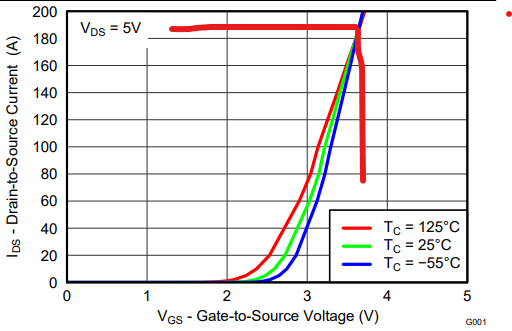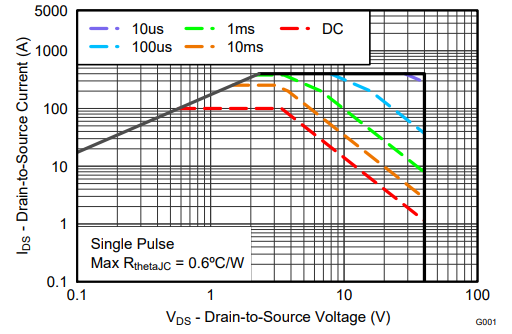I try to understand the thermal instability limitation in the SOA, and it means that the MOSFET should operate at the negative temperature coefficient. However, according to the Transfer Characteristics of the datasheet, the area of negative temperature coefficient is over a certain value (IDS<180A), in other word, the larger IDS, the more stable. as a result, the safe operation area should be above the thermal instability limitation curve instead of below. I would like to know if there is a problem in my understanding. By the way, I want to know how this curve (thermal instability limitation) is measured.
-
Ask a related question
What is a related question?A related question is a question created from another question. When the related question is created, it will be automatically linked to the original question.



